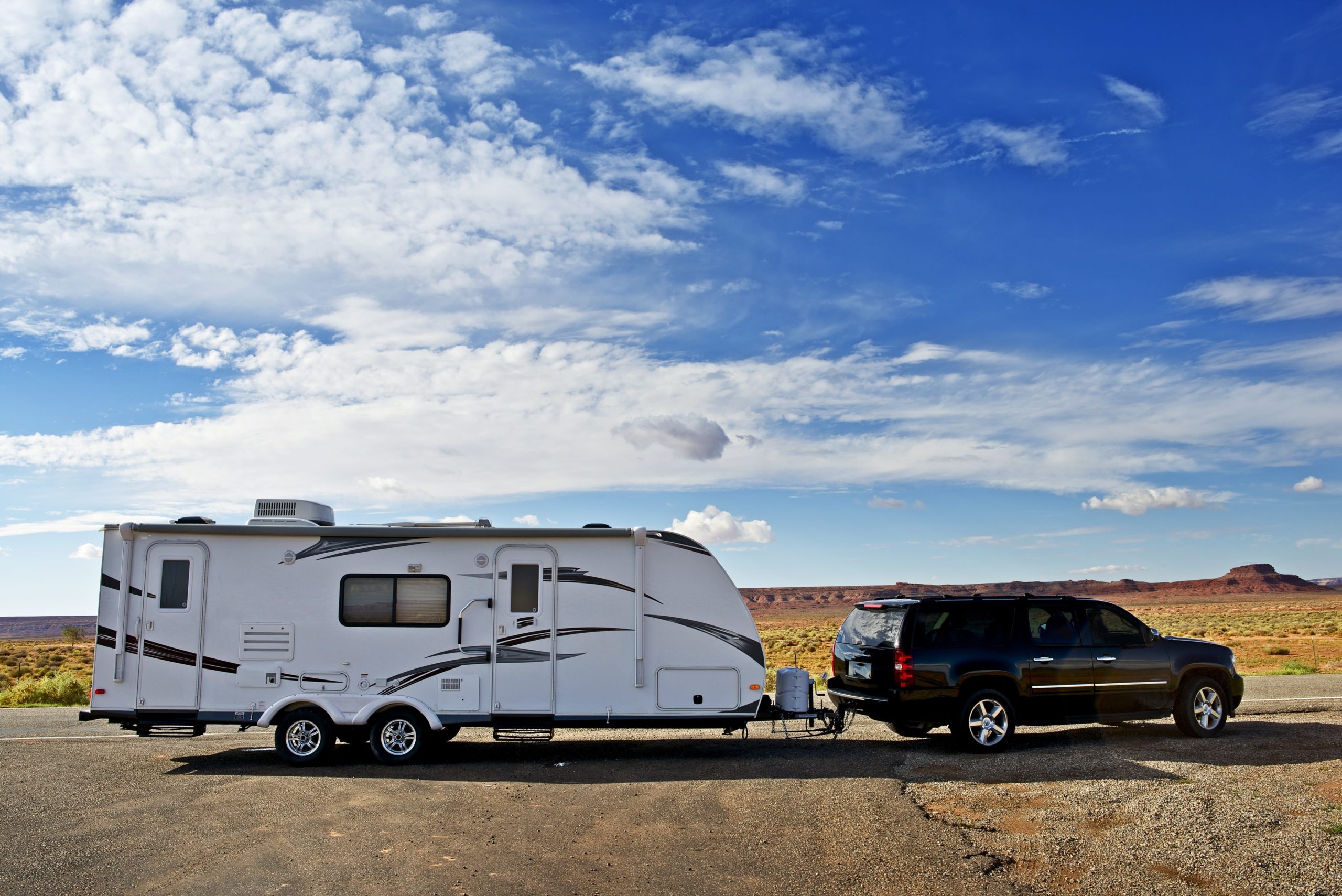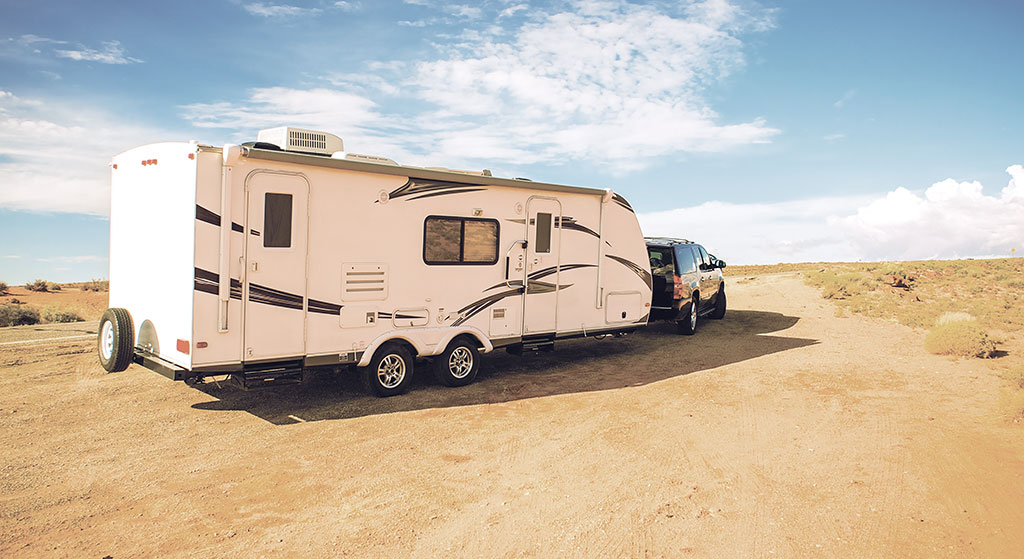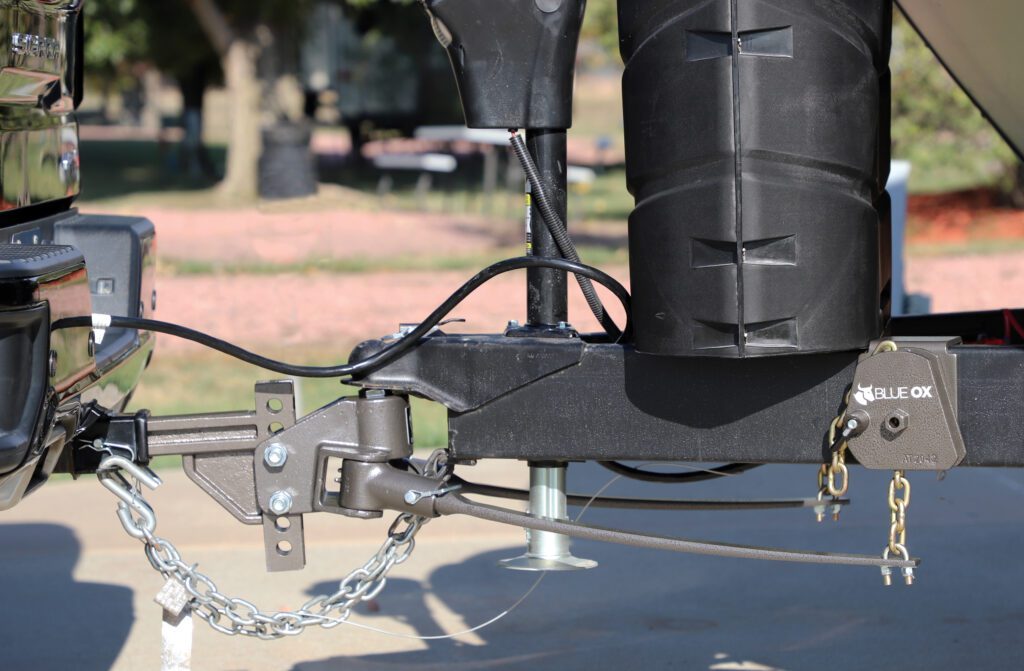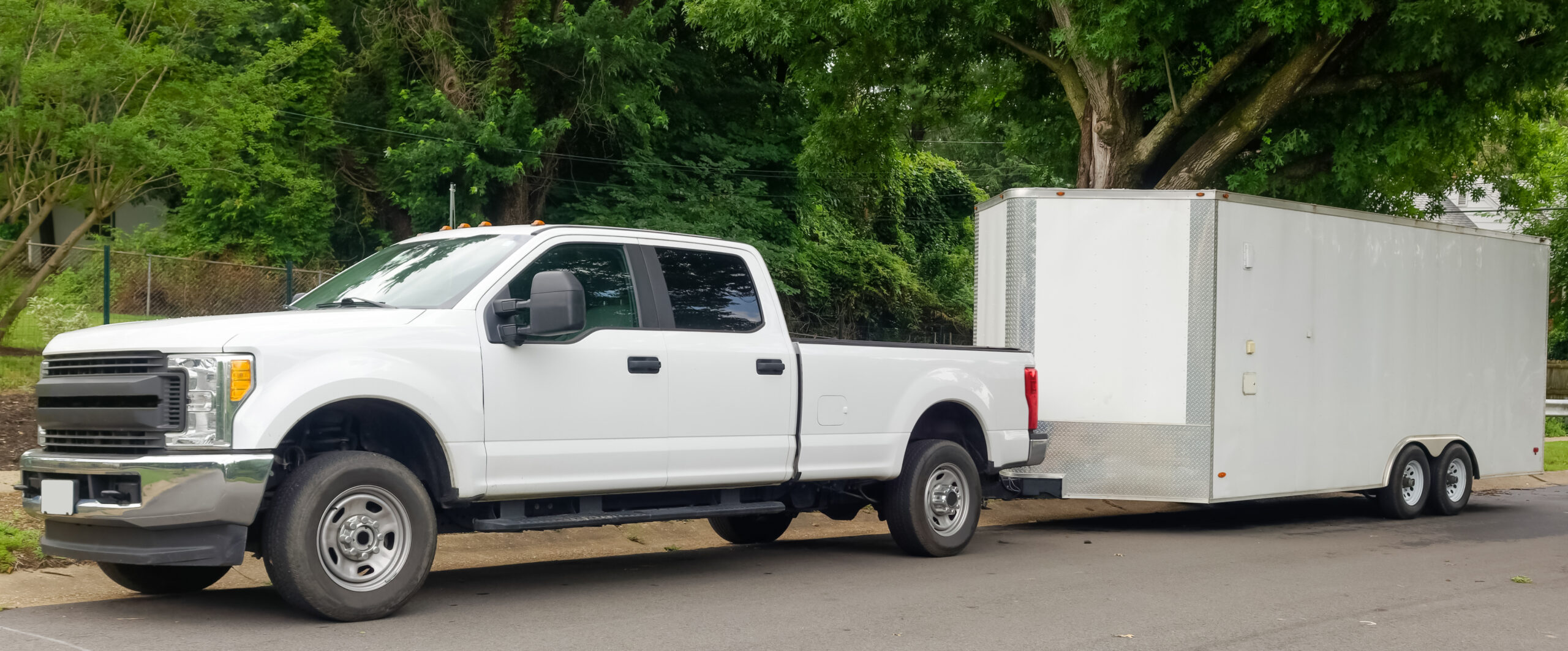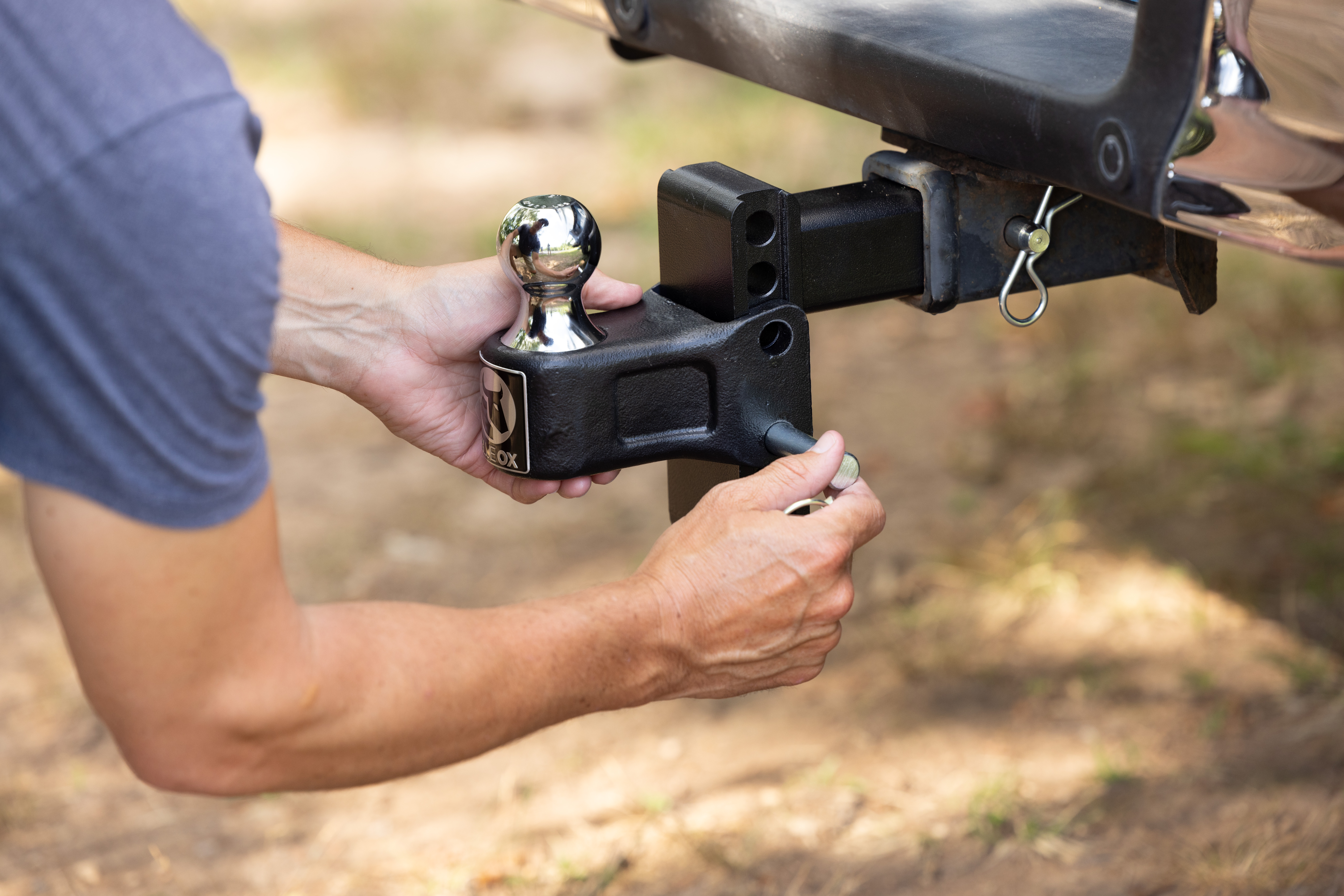If the words “weight distribution hitch” have you a little bit confused or if you’re wondering, “do I need a weight distribution hitch for my trailer” then this article is just for you. A weight distribution hitch is an essential piece of equipment when it comes to towing anything behind your vehicle. Towing a trailer, pop-up camper, or anything that is a considerable weight means you should have a weight distribution hitch installed.
When Should I Install a Weight Distribution Hitch?
Knowing when to install a weight distribution hitch is key to keeping your tow vehicle, trailer, and cargo safe. Not to mention ensuring a smoother, more controlled ride. It’s not just about how much weight you’re towing, but how that weight affects your vehicle’s handling, braking, and overall stability.
1. When Towing Over 5,000 lbs with a Midsize or Half-Ton Truck
Most midsize and half-ton trucks will require a weight distribution hitch when towing 5,000 pounds or more. That’s not just a suggestion. It’s typically outlined in the vehicle’s owner’s manual. These vehicles aren’t built to carry all that trailer tongue weight concentrated at the rear hitch point without redistributing it through the frame.
-
Check your trailer’s gross trailer weight (GTW) and tongue weight (TW).
-
If you’re nearing or exceeding 5,000 lbs, it’s time for a hitch system like the Blue Ox SwayPro, TrackPro, or 2-Point.
-
Always refer to your tow vehicle’s owner’s manual for exact towing specs and requirements.
2. When You Notice Rear-End Sag or Nose-Up Trailer Position
Hook up your trailer and take a good look at your setup:
-
Is the back end of your tow vehicle squatting?
-
Is the front of the trailer riding higher than the rear?
Both are signs that weight isn’t being properly distributed. When the rear of the tow vehicle drops under load, the front axle can lift slightly, reducing steering responsiveness and braking effectiveness. A weight distribution hitch will help level the rig and restore control.
3. When You Drive a Heavy-Duty Truck Towing Between 6,000–8,500 lbs
If you’ve got a three-quarter-ton or one-ton truck, you may not need weight distribution at lower trailer weights. But once you’re towing in the 6,000 to 8,500 lb range, you’re getting into territory where a weight distribution hitch adds a lot of value, especially for handling, sway control, and braking stability.
Again, your vehicle’s owner’s manual is your guide here. If the manual calls for one, install it. Ignoring that guidance can lead to unsafe towing conditions or voided warranties.
4. When You Experience Sway, Poor Handling, or Long Braking Distance
Even if your trailer falls under the weight guidelines, you might still need a weight distribution hitch if you’re noticing:
-
Sway from passing trucks or crosswinds
-
Light steering or reduced control
-
Front-end lift on the tow vehicle
-
Longer stopping distances
-
Trailer bounce or porpoising over uneven roads
A system like the Blue Ox SwayPro not only redistributes tongue weight but also uses built-in sway prevention to keep your rig tracking straight and true. You’ll immediately feel the difference in how your tow vehicle handles.
5. When the Owner’s Manual Says So
This is non-negotiable: if your tow vehicle’s owner’s manual recommends or requires the use of a weight distribution hitch when towing over a certain weight, you must follow it. Going beyond those specs without the proper equipment not only puts your safety at risk but may void your vehicle warranty. The same applies to some trailer manufacturers, especially with longer travel trailers or units with heavy front loads. When in doubt, follow manufacturer guidance.
6. When You’re Upgrading to a Larger or Heavier Trailer
If you’ve recently upgraded your trailer or started hauling more gear, ATVs, or tools than before, it’s time to evaluate your weight distribution needs. What used to be a borderline load might now exceed your truck’s capacity without a hitch system in place.
Before you hit the road:
-
Recheck your gross trailer weight and tongue weight.
-
Confirm your hitch rating and the load distribution across the axles.
-
Consider adding a Blue Ox weight distribution hitch designed to match your updated towing setup.
Common Uses for a Weight Distribution Hitch
Here are a few things to consider to help you decide if your situation calls for a weight distribution hitch. You should consider the weight of the item you are towing and the trailer that it is on. For example, towing a double-axel trailer with a car on it is likely to be over 5,000 pounds of towing weight. Towing a pull-behind camper will likely require a weight distribution hitch as they are generally over 5,000 pounds. Another way to help you decide is by measuring the front and rear unladen heights of the vehicle and the trailer’s level front and rear heights. Then, measure your tow tug’s wheen arches from the center top of the wheel arch to a fixed point on the wheel. Once you hitch up, take each of those measurements again to see if there is more than 20mm difference. If there is, you will need a weight distribution hitch.
What to Know When Using a Weight Distribution Hitch
While using a weight distribution hitch can help keep your ride smooth and balanced, that doesn’t mean you can load the trailer and vehicle improperly without consequence. The weight should still be properly distributed, placing the heaviest items over the axel and keeping each side with fairly equal weight. If you are loaded down unevenly, you will likely still experience difficulty driving or reducing trailer sway.
Choosing a Weight Distribution Hitch
Weight distribution hitches like SwayPro from Blue Ox work with almost any tow vehicle. To know which kind is right for you, determine the hitch ball height installed on your vehicle’s bumper. You will then need to decide which trailer coupler you will use. A standard hitch head and clamp-on latches are included with most SwayPro models. You will also need to determine the total tongue weight of your trailer after it is loaded so that the weight is realistic to what you will be towing. You can use a vehicle scale or a TW scale to figure this out.
Get a Superior Weight Distribution Hitch from Blue Ox
Blue Ox offers two different weight distribution hitch options; SwayPro and TrackPro. Both of these prevent trailer sway before it starts and doesn’t require you to unhook before backing up. They each offer an easy to use design that makes hookup and disconnecting a breeze. Visit our website to learn more or to order yours today.

